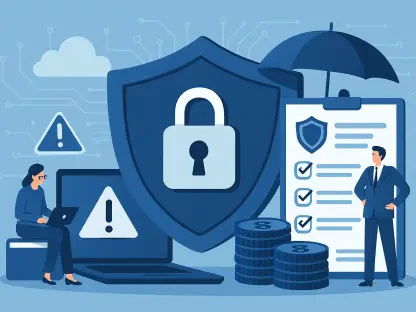Cryptocurrency, specifically Bitcoin, has transformed the financial landscape. However, its pseudonymity has also made it a target for illicit activities. The article delves into the innovative use of Graph Convolution Networks (GCNs) for detecting fraud within Bitcoin transactions. Cryptocurrencies present unique challenges for traditional anti-money laundering (AML) measures, requiring more sophisticated detection methods. The study focuses on leveraging GCNs to address these challenges effectively.
Introduction to Anti-Money Laundering in the Cryptocurrency Era
The emergence of Bitcoin revolutionized digital transactions, introducing new complexities in combating financial fraud. Traditional AML regulations struggle to keep up with the rapid evolution of cryptocurrency schemes. The need for enhanced technological solutions becomes apparent.
Utilizing the Elliptic Bitcoin Dataset
Characteristics of the Dataset
The Elliptic Bitcoin Dataset is integral, providing a graph-based data structure of transaction networks labeled as licit, illicit, or unknown. This dataset’s nodes and edges reflect the nature and dynamics of the Bitcoin transaction network, serving as the basis for analyzing and detecting fraud.
Role of the Elliptic Dataset in Model Training
The dataset helps train various machine learning models, including the GCN, for improved accuracy in fraud detection. By mapping transaction behaviors, the dataset offers insights critical for fine-tuning model parameters and enhancing predictive outcomes.
Deep Learning in Fraud Detection
The Shift from Traditional to Advanced Models
Machine learning has evolved, with deep learning models like GCNs outperforming traditional algorithms in detecting intricate fraudulent patterns. These models are instrumental in discerning complex network structures, making them ideal for cryptocurrency environments.
Implementation of Graph Convolution Networks
GCNs leverage graph-structured data, which is suitable for blockchain transaction analysis, thereby enhancing the detection of illicit activities. The architecture of GCNs allows for integrating node features and applying convolutional operations, leading to more accurate classification results.
Comparative Analysis of Algorithms
Array of Models Implemented
Multiple algorithms, including Logistic Regression, Random Forest, Long Short-Term Memory (LSTM), and Support Vector Machine (SVM), alongside GCN, were evaluated. These models were assessed based on their performance metrics such as accuracy, ROC curve, precision, recall, and F1 score.
Results and Performance Metrics
GCN achieved superior results, showcasing high accuracy, AUC scores, and lower RMSE values, highlighting its efficacy in fraud detection. Comparative analysis revealed GCN’s potential to outshine traditional algorithms in handling the complexity of Bitcoin transactions.
Detailed Look at Individual Models
Logistic Regression
Logistic Regression provides a foundational approach but is constrained by its simplicity in capturing complex transactional relationships. Despite its foundational role, it underperforms compared to more advanced models like GCN.
Random Forest Classifier
Random Forest, an ensemble learning method, offers robust results but lacks the nuanced performance of GCN in a graph-structured context. Its deterministic nature makes it reliable yet insufficient for the dynamic nature of Bitcoin networks.
Support Vector Machine
SVM caters to both linear and non-linear classifications but struggles with the scalability required for extensive transaction datasets. Its accuracy and precision metrics fall short when compared to the graph-based approach of GCN.
Long Short-Term Memory Networks
LSTM is adept at capturing temporal dependencies, vital for transaction analysis, but is outperformed by the GCN’s graph-centric efficiencies. It remains a strong contender but benefits less from the transactional context than GCN does.
Real-World Relevance of Findings
Practical Application
The use of the Elliptic dataset ensures that GCN’s implementation can handle real-world, high-dimensional, incomplete, and noisy data effectively. The model’s practical applications in AML extend beyond theoretical constructs, demonstrating real-world viability.
Future Prospects and Enhancements
The study underscores the potential for further refining deep learning models, particularly by integrating more robust graph features. Future research areas are identified, including enhancing ransomware detection and identifying key network players, emphasizing continuous innovation.
Towards Improved Anti-Money Laundering Tools
Significance of GCN in AML
The study highlights GCN’s pivotal role in evolving AML tools, addressing the gap left by traditional methods in a digital currency context. Adopting such sophisticated algorithms is crucial to staying ahead of increasingly complex fraudulent activities.
Enhancing Financial Safeguards through Advanced Models
Cryptocurrency, with Bitcoin being the most well-known, has revolutionized the financial world. However, the pseudonymous nature of Bitcoin has made it a prime target for illegal activities like money laundering and fraud. Traditional anti-money laundering (AML) measures struggle to tackle these challenges due to the unique characteristics of cryptocurrencies. Consequently, there is a growing need for more advanced detection methods.
This article explores the cutting-edge application of Graph Convolution Networks (GCNs) in identifying fraudulent activities within Bitcoin transactions. GCNs are a type of neural network that excels at processing data structured as graphs, making them particularly suitable for analyzing the intricate web of Bitcoin transactions. The study highlights how leveraging GCNs can offer a more robust solution to the challenges faced by conventional AML systems.
By using GCNs, researchers aim to enhance the detection and prevention of financial crimes in the cryptocurrency landscape. These networks can identify patterns and anomalies that may indicate fraud, offering a promising tool for law enforcement and regulatory bodies alike. As cryptocurrencies become more integrated into the global financial system, the need for sophisticated methods like GCNs to ensure their safe and legal use will only continue to grow.









